Action Potential
1/7
There's no tags or description
Looks like no tags are added yet.
Name | Mastery | Learn | Test | Matching | Spaced |
|---|
No study sessions yet.
8 Terms
Resting Membrane Potentials
Flow = permeability x driving force
Driving Forces:
Concentration gradient
Electrical gradient
Electrochemical gradient
Excitable Tissues
electrically active tissues
nervous tissue
muscle tissue (skeletal, smooth, & cardiac)
Action Potentials
Series of changes in the membrane potential (change from PMP).
Occur during the transmission of an electrical signal along the cell membrane.
Voltage changes determined by measuring at a specific point on a nerve or muscle cell membrane.
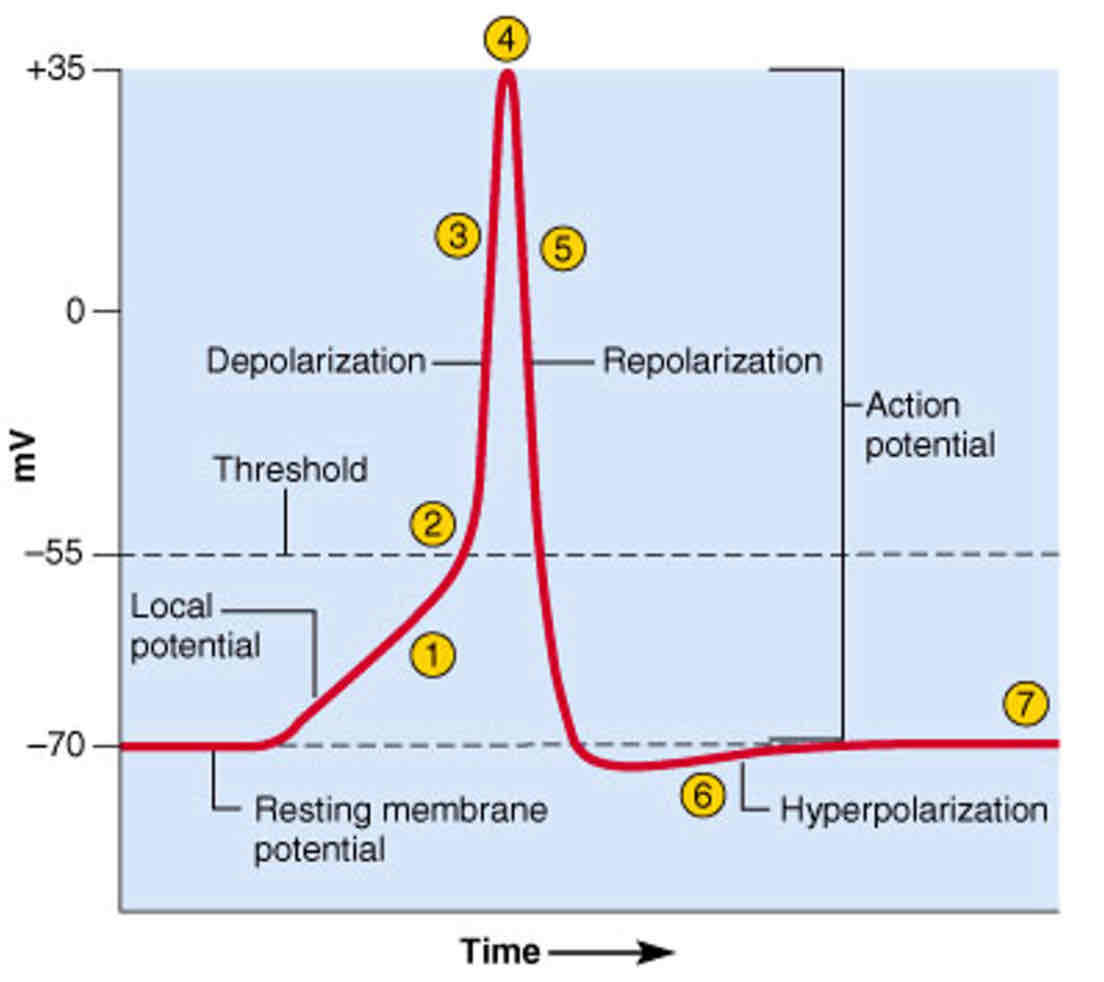
Local Potential
“Passive” Depolarization
Depolarization to Threshold
Depolarization produced by the stimulus
chemical, electrical, and mechanical
Depolarization due to what’s done to this part of the membrane
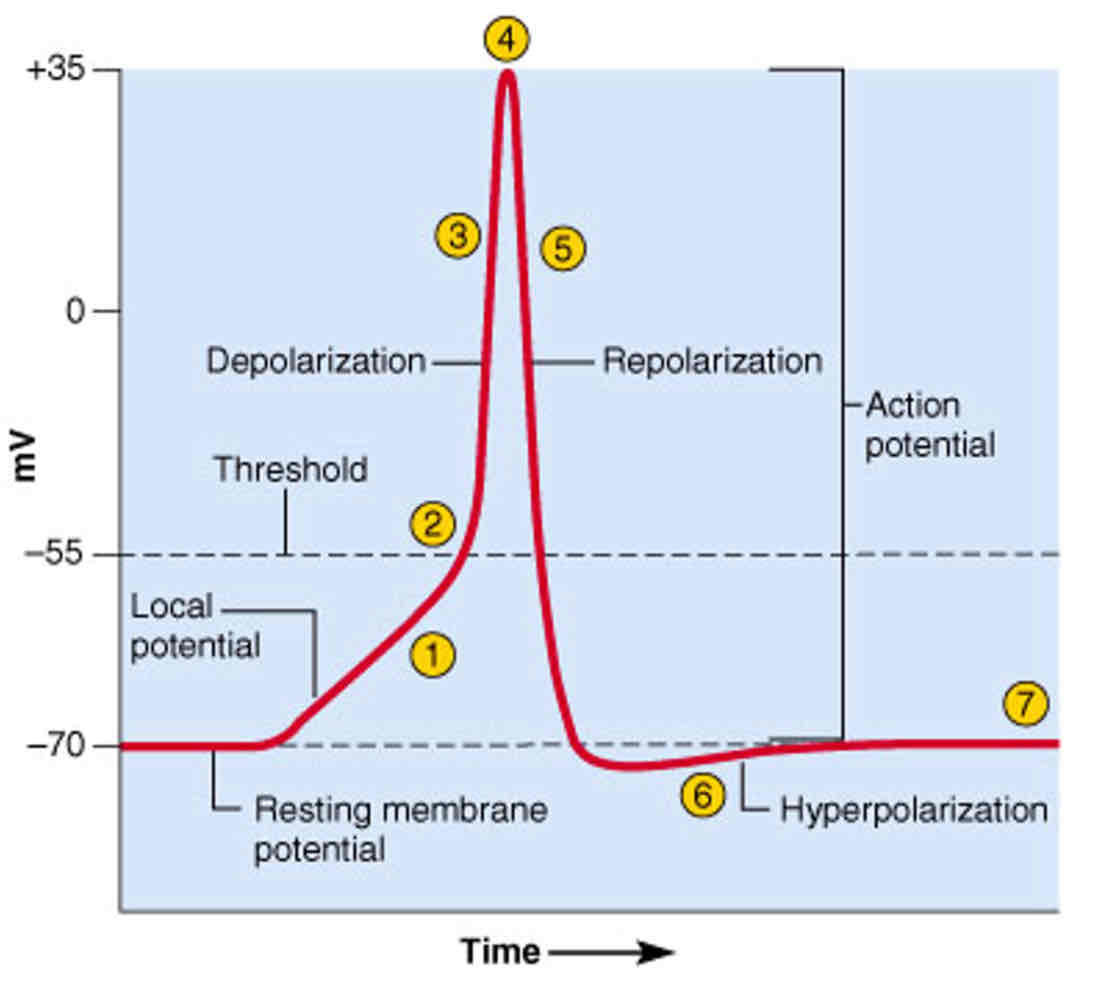
Threshold
the production of an action potential is an all-or-none response
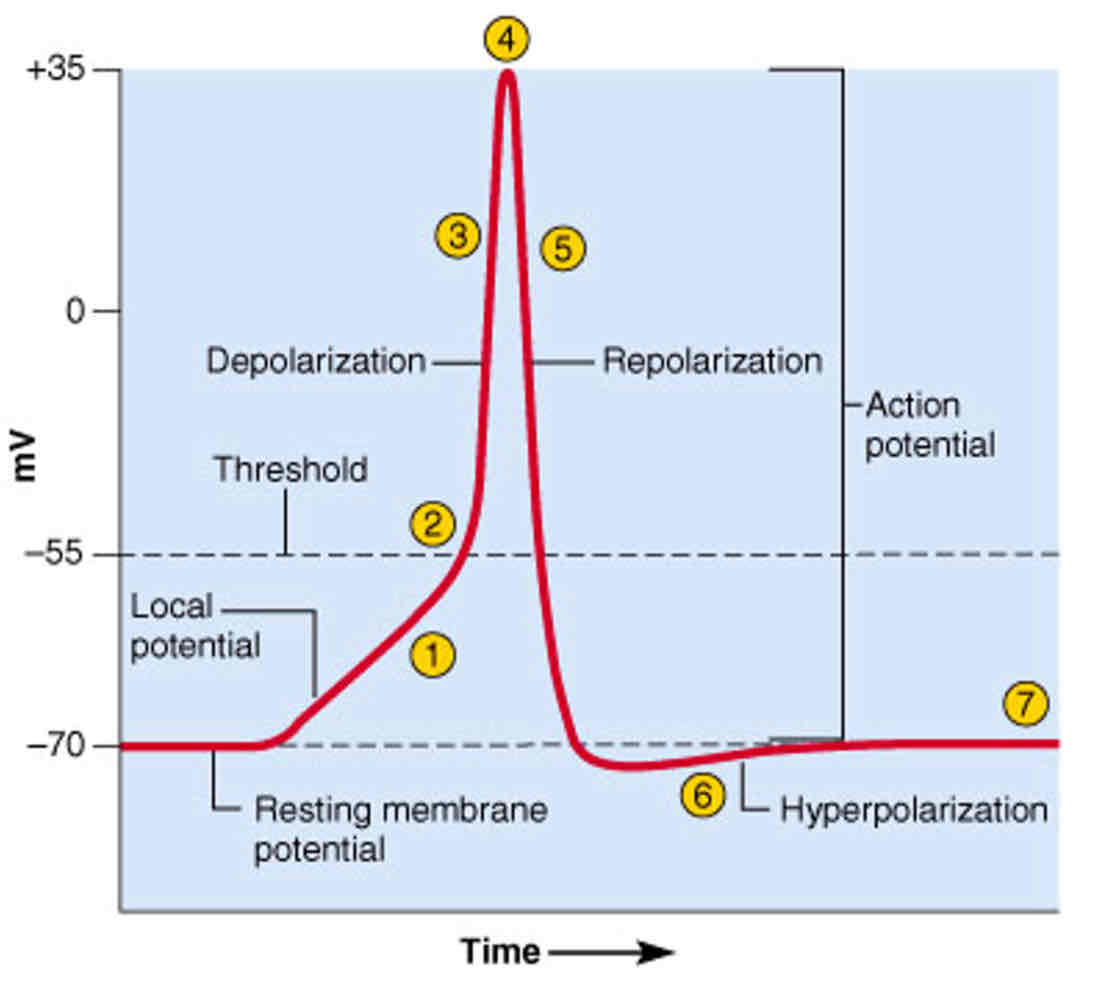
Depolarization
“Active”/”Rapid”
produced in response to the stimulus
due to what this part of the membrane does
Acceleration indicates a process that positive feedback
Depolarization continues and reaches peak at about +35 mV
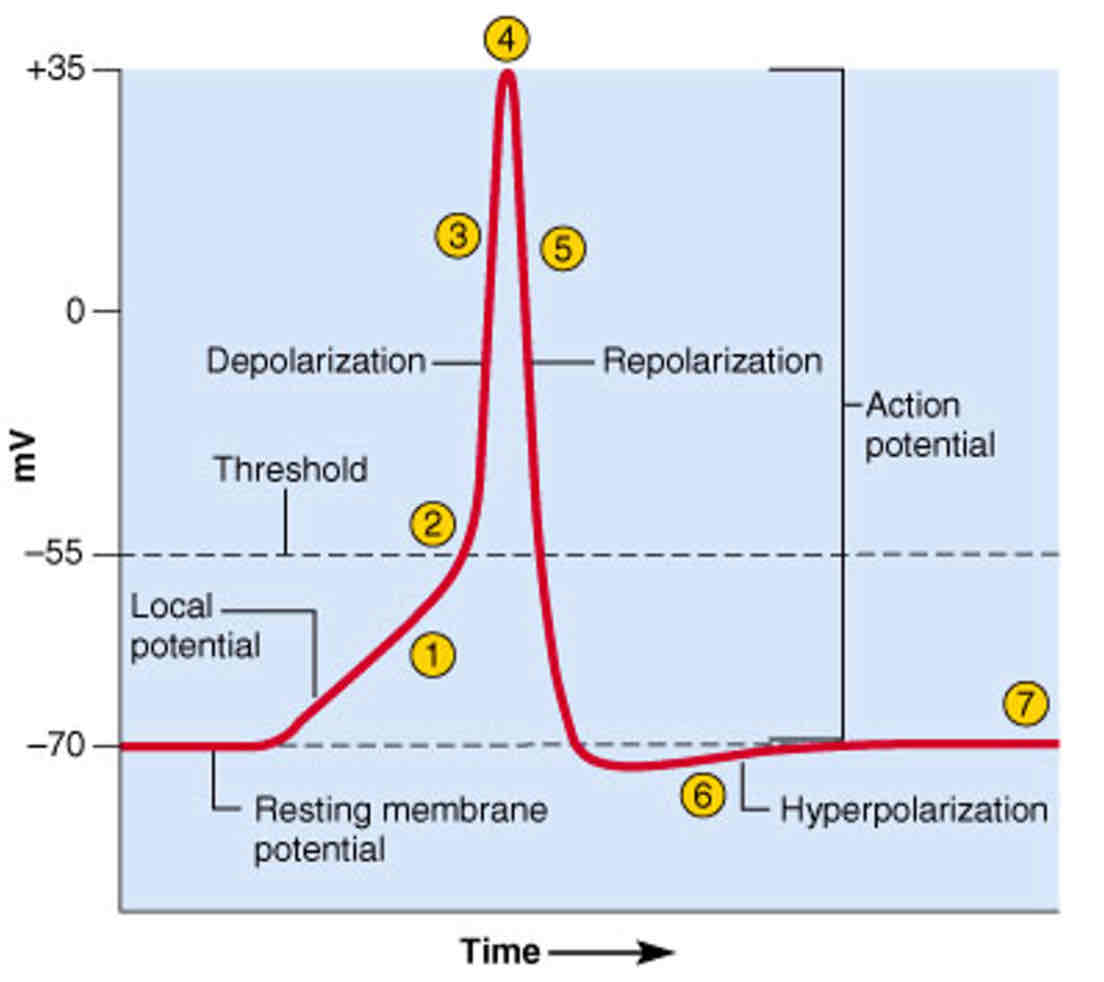
Repolarization
Membrane potential returns to resting level
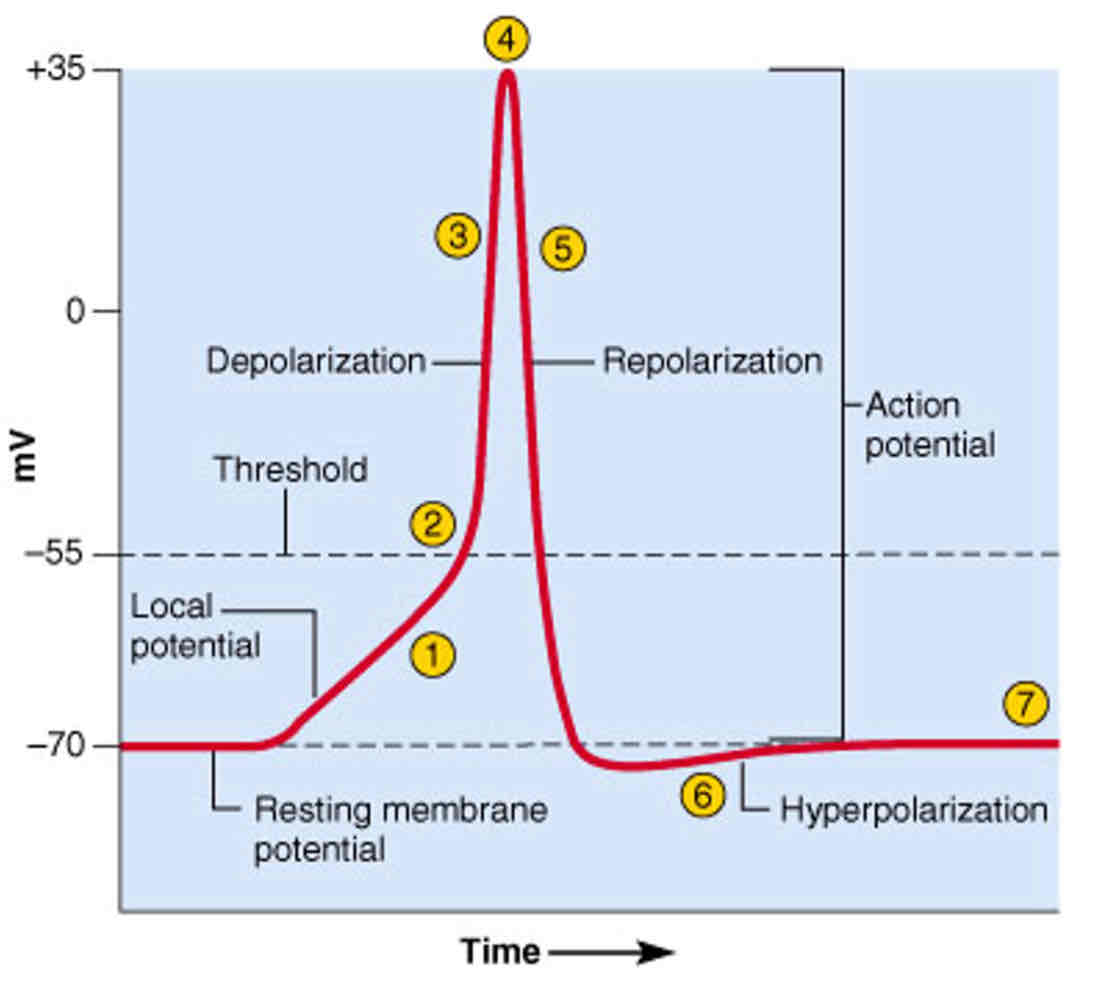
Hyperpolarization
Membrane potential becomes even more negative, falling a little bit below resting membrane potential, and then gradually returns back to resting level.